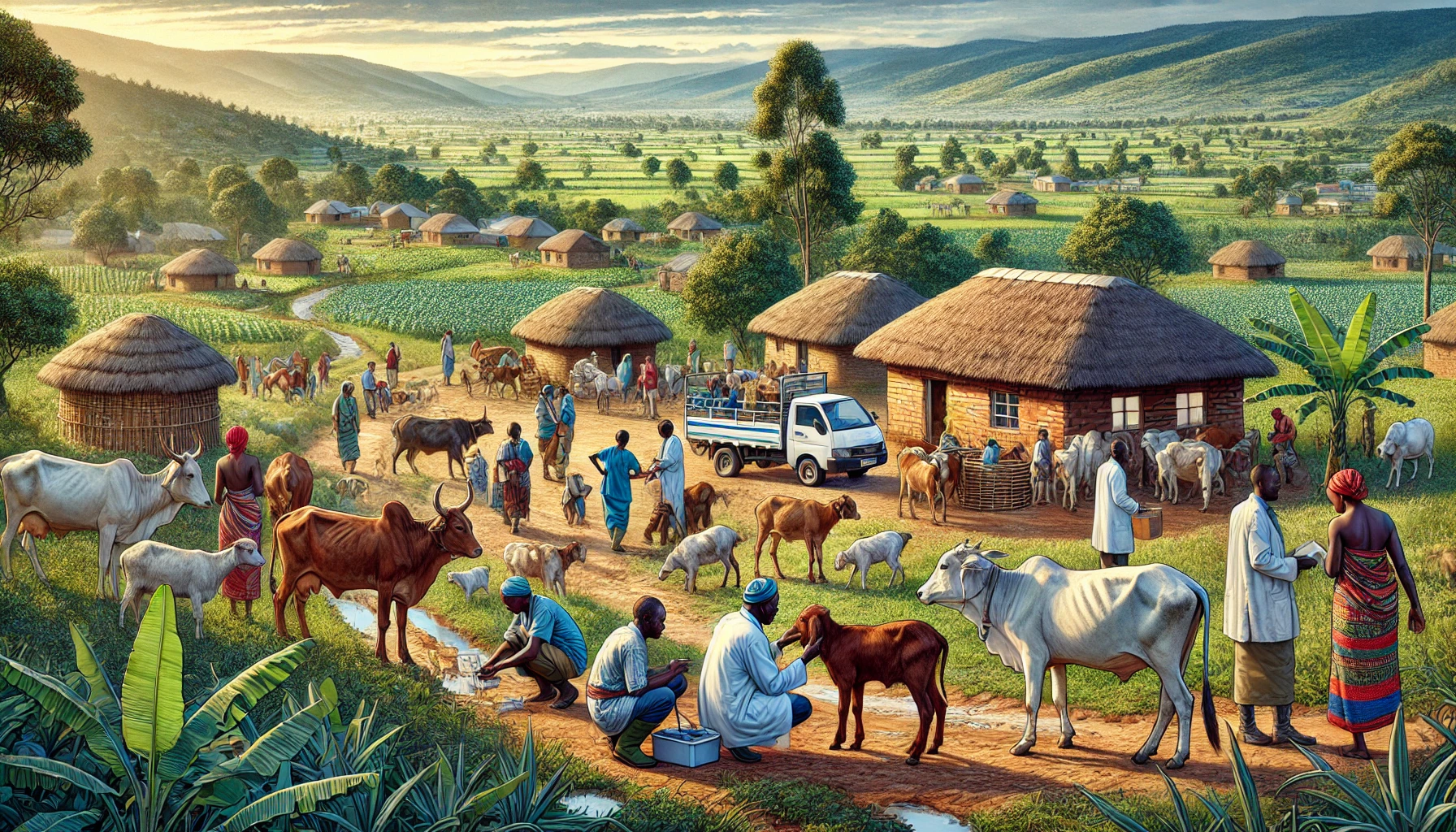Experts Chart Path to Resilient Livestock and Animal Health at CUFAPH Annual Meeting
Livestock is a lifeline for more than 100 million people in Southern Africa, with the sector sustaining around 42% of the region’s population and contributing up to 40% of agricultural GDP.

- Country:
- South Africa
The second annual meeting of the Coordinating Unit for Animal Production and Health (CUFAPH) under the Food and Agriculture Organization (FAO) Subregional Office for Southern Africa convened in Johannesburg, South Africa, bringing together 30 leading animal health experts, regional organizations, and FAO technical staff. The gathering marked another significant milestone in the regional drive for harmonized and sustainable livestock development, essential for food security and economic growth across the Southern African Development Community (SADC).
Building a United Front for Livestock Health and Food Security
CUFAPH was established in 2020 as a multidisciplinary platform to foster technical cooperation, regional knowledge exchange, and alignment of national animal health and production efforts with broader SADC priorities. The group promotes a collaborative One Health approach, integrating animal, human, and environmental health to address the interlinked challenges facing the livestock sector.
Livestock is a lifeline for more than 100 million people in Southern Africa, with the sector sustaining around 42% of the region’s population and contributing up to 40% of agricultural GDP. For smallholder farmers, in particular, robust animal health systems offer a vital pathway out of poverty.
FAO and Regional Leaders Highlight Strategic Importance
Dr. Patrice Talla, FAO Subregional Coordinator for Southern Africa, officially opened the meeting and praised CUFAPH’s contributions in tackling transboundary animal diseases and advancing sustainable livestock systems. “Through CUFAPH, we are working to transform livestock systems so they contribute not only to economic growth but also to healthier people, animals, and ecosystems, reflecting the spirit of One Health,” Dr. Talla remarked. He underscored that this effort aligns with the FAO’s aspiration of “Better Production, Better Nutrition, a Better Environment, and a Better Life for all.”
Echoing this sentiment, Dr. Babagana Ahmadu, FAO Representative in South Africa, emphasized the importance of regional cooperation, especially in the fight against diseases like Foot and Mouth Disease that threaten food security and rural livelihoods. “We are committed to working closely with our neighbours to strengthen veterinary services and safeguard food security for all,” he noted.
Reviewing Progress, Sharing Successes, and Addressing Challenges
The CUFAPH annual workshop provided a dynamic forum to assess achievements, share lessons learned, and set strategic priorities for the coming year. Central to discussions was the urgent need for Adaptive Resource Mobilization (RM), recognizing the increasing competition for donor support in a tightening funding environment. CUFAPH aims to sharpen its skills in designing high-impact, fundable proposals that can secure vital resources for animal health initiatives.
CUFAPH’s five thematic groups—Livestock Production, One Health, Laboratory, Disease Control, Emergency and Resilience (DiCER), and the Virtual Learning Centre—each presented progress reports and outlined actionable steps to strengthen regional coordination. Notably, Dr. Berhanu Bedane, CUFAPH Team Lead, highlighted the group’s success in helping SADC member states develop national One Health strategies and in expanding online training for veterinarians and animal health technicians.
Impactful Projects and Regional Policy Integration
A key highlight of the meeting was the impact of the EU-funded STOSAR II Project, which is supporting the operationalization of the SADC Regional Agricultural Policy and bolstering animal health interventions in the region. These efforts are driving forward regional harmonization, improved disease surveillance, and capacity building among animal health professionals.
Forward-Thinking Strategic Recommendations
The workshop concluded with the adoption of a series of strategic recommendations to guide future action in the SADC region, including:
-
Establishing a Laboratory Thematic Working Group: To strengthen diagnostic capacity, terms of reference and a work plan for the group will be developed.
-
Scaling Up Capacity Building: Priority topics for both virtual and in-person training will be identified to enhance skills and technical knowledge region-wide.
-
Boosting Communications and Visibility: A robust communications plan will be rolled out, supported by active content contributions from project leads and thematic groups.
-
Advancing Resource Mobilization: CUFAPH will prepare and present concept notes for high-priority initiatives, integrating efforts across thematic areas.
-
Rebranding the Virtual Learning Centre: This move aims to position the Centre as a cost-effective, engaging tool for continuous professional development.
-
Institutionalizing Digital Tools: Promotion of Livestock Information Management Systems (LIMS) and e-certification will help improve traceability, disease intelligence, and efficiency in veterinary services.
Building Partnerships for a Resilient Future
The annual meeting concluded with team-building activities, reinforcing the collaborative spirit and strengthening networks essential for effective regional animal health and production coordination. With these renewed commitments, CUFAPH stands poised to drive meaningful, sustainable progress for livestock keepers, animal health workers, and communities throughout Southern Africa—helping to secure resilient livelihoods in an era of growing climatic and economic challenges.
- READ MORE ON:
- Animal Health
- Livestock Development
- FAO
- CUFAPH
- SADC
- One Health
- Food Security
- Veterinary Services
- Regional Collaboration
- Resource Mobilization
- STOSAR II Project
- Southern Africa
- Disease Control
- Digital Tools
- Capacity Building
- Sustainable Agriculture
- Johannesburg
- 2025
- Agricultural Policy
- Poverty Reduction
ALSO READ
AI watches the herd: Precision grazing offers hope for sustainable agriculture
India looks forward to boosting ties with Maldives, committed to support capacity building: PM Modi
India looks forward to boosting ties with Maldives, committed to support capacity building: PM Modi
India looks forward to boosting ties with Maldives, committed to support capacity building: PM Modi
India looks forward to boosting ties with Maldives, committed to support capacity building: PM Modi










